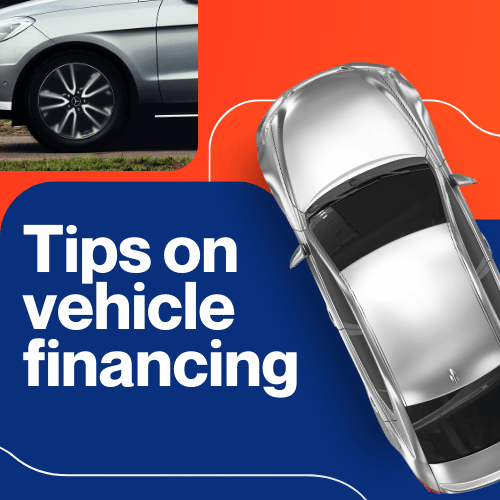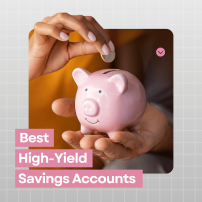When it comes to purchasing a vehicle, one of the biggest decisions you will face is how to finance your purchase.
The debate between paying in cash or opting for installments has been ongoing for years.
Each method has its own advantages and potential pitfalls, and the best choice depends on your personal financial situation, credit history, and long-term goals.
Understanding the Basics of Vehicle Financing
Vehicle financing involves obtaining the necessary funds to purchase a car.
This can be done in one of two primary ways: paying in cash or financing the purchase through installments via an auto loan.
Let’s take a closer look at both methods.
Paying in Cash
A cash purchase means you pay the entire amount of the vehicle upfront without borrowing money.
This method is often considered straightforward and can offer significant advantages:
- No Interest Charges: When you pay in cash, you avoid paying interest rates that come with auto loans. This means you are not subject to additional costs over time.
- Ownership and Equity: With a cash purchase, you own the vehicle outright from day one. There are no liens or financial obligations to a lender.
- Simpler Process: The process of buying a car in cash is generally less complicated since it avoids the paperwork and credit checks required for a loan.
- Improved Negotiation Leverage: Cash buyers may have better negotiation power, as sellers often prefer the certainty and immediacy of a cash payment.
Financing with Installments
Opting for installments involves taking out an auto loan, which means borrowing money from a lender to cover the purchase price of the vehicle.
You then repay the loan over a set period, usually with interest.
Here are some of the benefits and drawbacks of this approach:
- Lower Upfront Costs: Financing allows you to keep more savings on hand, as you are not required to pay the full amount in cash at the time of purchase.
- Improved Cash Flow: By spreading out payments, you can maintain greater financial flexibility, which might be especially important if you have other financial commitments.
- Credit Building: Successfully managing an auto loan and making timely payments can improve your credit score, which is beneficial for future financing needs.
- Interest and Fees: The downside is that you will pay interest on the loan, which can significantly increase the overall cost of the vehicle over time. Additionally, there might be additional fees or penalties associated with the loan.
Key Factors to Consider
Choosing between a cash purchase and installment financing requires careful consideration of several important factors:
Budget and Savings
Your current budget and level of savings are critical in determining which method is best for you.
If you have enough funds available to cover the full cost of the vehicle without depleting your emergency reserves, a cash purchase might be appealing.
However, if paying in cash would leave you with little financial buffer, financing the vehicle through installments might be a safer option.
Credit Score
Your credit score plays a significant role in qualifying for favorable auto loans.
A higher credit score often results in lower interest rates, making installment financing more attractive.
Conversely, if your credit history is less than stellar, you might face high interest rates and additional fees, which could make a cash purchase a better alternative if possible.
Interest Rates and Loan Terms
Understanding the interest rates and the overall loan term is crucial when considering installment financing.
Even a small difference in the interest rate can lead to a significant difference in the total amount paid over time.
It is important to shop around for the best auto loan deals and consider the overall cost beyond the sticker price of the vehicle.
Financial Flexibility vs. Debt Load
Buying a vehicle in cash eliminates the burden of monthly loan payments and associated interest, providing peace of mind and immediate full ownership.
On the other hand, financing through installments allows you to keep more cash on hand for other investments or emergencies.
Consider your long-term financial goals and the level of debt you are comfortable managing.
Benefits of Paying in Cash
Let’s dive deeper into the advantages of making a cash purchase for your vehicle:
No Ongoing Payments
Paying in cash means you do not have the burden of monthly installment payments.
This can lead to a reduction in overall financial stress and allow you to allocate funds towards other areas of your life, such as savings, investments, or even additional purchases.
Avoiding Interest Costs
One of the most significant benefits of a cash purchase is the elimination of interest charges.
When you finance a vehicle, the total cost often increases substantially due to interest rates applied over the life of the loan.
By paying in cash, you ensure that the price you negotiate is the final price, with no hidden costs.
Improved Negotiation Power
Sellers and dealerships are sometimes more willing to negotiate when a buyer offers to pay in cash.
This is because a cash transaction is often seen as less risky and can speed up the sale process.
You might secure a better deal or additional incentives by leveraging your ability to pay upfront.
Weighing the Risks
Both methods of vehicle financing come with their own set of risks. It’s important to assess these risks carefully:
For Cash Buyers
- Liquidity Risk: Paying in cash significantly reduces your available liquidity. In case of an emergency or unexpected expense, having a large amount of money tied up in a depreciating asset can be risky.
- Opportunity Cost: Using a significant portion of your savings for a vehicle means that those funds are not available for potentially higher-yielding investments.
- Limited Diversification: Allocating a large sum in cash towards a single purchase can limit your financial diversification and reduce your overall investment portfolio’s potential growth.
For Buyers Who Finance
- Debt Accumulation: Taking on an auto loan increases your overall debt load, which could impact your ability to secure future financing.
- Interest and Fees: The extra cost of interest and potential fees means that the total amount you pay for the vehicle can be much higher than the initial purchase price.
- Risk of Negative Equity: If the vehicle depreciates faster than you pay down the loan, you could end up owing more than the car is worth—a situation known as being “upside down” on your loan.
- Economic Changes: Fluctuations in the economy, such as rising interest rates, can affect your ability to refinance or manage other debts, which might indirectly impact your financial stability.
Conclusion
In the ever-evolving landscape of vehicle financing, staying informed and assessing your options is key.
Whether you decide to take the straightforward route of a cash purchase or the flexible path of installment financing, make sure to align your decision with your overall financial strategy.
This way, you can enjoy your new vehicle with the confidence that you made the choice that’s best for you and your future.
No matter which route you choose, understanding the implications of your decision is essential.
With careful planning and thoughtful analysis, you can navigate the world of vehicle financing successfully and drive away with both your new car and peace of mind.






